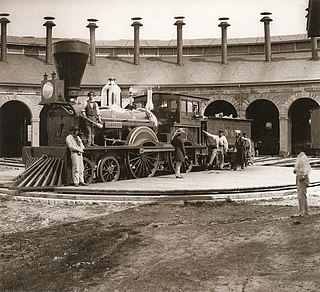| Jeannette's Creek train wreck | |
|---|---|
| Details | |
| Date | October 27, 1854 5 am |
| Location | Baptiste Creek, Canada West |
| Country | Canada |
| Operator | Great Western Railway |
| Incident type | Rear-end collision |
| Statistics | |
| Trains | 2 |
| Deaths | 52 |
| Injured | 48 |
The Jeannette's Creek train wreck, also known as the Baptiste Creek train wreck, was a fatal railroad accident on October 27, 1854, at Baptiste Creek near present-day Jeannettes Creek in Chatham-Kent, Ontario. It was Canada's first major train wreck, leaving 52 people dead [1] and indeed the worst rail disaster in North America at that time. [2]
The train involved left Niagara Falls the previous afternoon; it comprised eight cars altogether; four first-class, two second-class and two baggage cars. As was commonplace during that early time of rail travel it was subject to several delays; these were caused by dense fog, a derailed gravel-train, a burst cylinder head and a slow freight train ahead of it. By the time it left London at 1 a.m. bound for Windsor it was at least four hours late. [3]
At Baptiste Creek, a gravel train consisting of fifteen cars loaded with wet gravel was on a siding employed in repairing the trackbed. Its engineer had been told by the night watchman at Baptiste Creek station that it was safe to venture onto the mainline as the passenger train had already passed; at 5 a.m. as the train backed along the main railway line at between 10 and 12 mph (16–19 km/h) the passenger train emerged from the fog at 20 mph (32 km/h).
The collision was described as "absolutely dreadful", the second-class cars were described as being "smashed into bits and pieces" with "nearly every person of them killed or dreadfully injured". The people in the front of one of the first class cars suffered a similar fate.
Witnesses described several of the bodies, which included eleven women and ten children, as being "crushed out of all human shape". Six hours later, many of the bodies still had to be recovered. The second-class cars carried many German emigrants on their way to the United States. The 48 [1] (some sources 60 [4] ) injured were taken to Chatham where their moans and cries could be "heard throughout the town", with blood literally dripping from the cars.
A grand jury found that Twitchell, conductor of the gravel train and Kettlewell, engineer of the train were criminally responsible for the death of 52 persons and they were charged with manslaughter. According to the jury, the gravel train had entered onto the track in contravention of the rules of the Great Western, and in any case, should not have proceeded onto the track in the dense fog. [5]

The Selby rail crash was a railway accident that occurred on 28 February 2001 near Great Heck, Selby, North Yorkshire when a passenger train collided with a car which had crashed down a motorway embankment onto the railway line. The passenger train then collided with an oncoming freight train. Ten people died, including the drivers of the two trains, and 82 were injured. It remains the worst rail disaster of the 21st century in the United Kingdom.

The Great Western Railway was a railway that operated in Canada West, today's province of Ontario, Canada. It was the first railway chartered in the province, receiving its original charter as the London and Gore Railroad on March 6, 1834, before receiving its final name when it was rechartered in 1845.

The Spanish River derailment was a rail transport accident that occurred on 21 January 1910, on the Canadian Pacific Railway (CPR) Webbwood Subdivision, where the railway crosses the Spanish River near the settlement of Nairn near Sudbury, Ontario, Canada. A westbound passenger express train derailed and crashed into the Spanish River bridge, killing at least 43 passengers, though the death count varies. The cause was never established, but was believed to be poor track condition and/or speeding and braking on a curve.
Jeannette's Creek is a community in Chatham-Kent, Ontario, Canada. As late as 1881, it was called Baptiste's Creek. It is located along the River Road in Tilbury East township.

The Ninth Avenue derailment, on the Ninth Avenue Elevated in Manhattan on September 11, 1905, was the worst accident on the New York City elevated railways, resulting in 13 deaths and 48 serious injuries.

The Angola Horror train wreck occurred on December 18, 1867, just after 3 p.m. when the last coach of the Buffalo-bound New York Express of the Lake Shore Railway derailed at a bridge in Angola, New York, United States, slid down into a gorge, and caught fire, killing some 49 people. At the time, it was one of the deadliest train wrecks in American history.

The Rockport train wreck occurred in Rockport in Mansfield Township, New Jersey, United States, about three miles outside of Hackettstown, on June 16, 1925. A violent storm washed debris onto a grade crossing, derailing a Lackawanna Railroad (DL&W) train. The crash killed 42 passengers and five crewmen and injured twenty-three others.